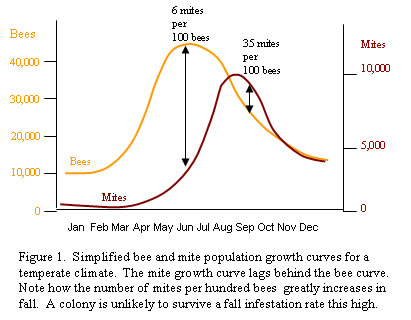Finman,
You yave brought the wrath of the forum down on your head because you are so adamant that varroa is always going to kill the colony in the next few weeks and you must use 3.2% oxalic acid every winter and all beekeepers are two hive owners ... and so it goes on.. At last some are seeing through your methods as purely commercial, and that given lots of good healthy bees going into winter is enough to ensure a good healthy colony in the spring - maybe with some varroa, but certainly not a dead-out as your posts appear to warn. I know exactly what you mean; oxalic allows you to not treat again for some time, even until the autumn, after harvest. But your posts do not take into account the hobby nature of the many beekeepers on this forum with just a couple of hives. Those of us with more than twenty or so colonies can easily afford to test out the alternative treatment regimes and I, for one, have repeatedly reported minimal winter losses without winter oxalic treatment - much to your chagrin.
The current situation may not be as good as it appears from the posts here, but it may demonstrate that the situation for the likes of Chis Luck and others in France is not all outlandish lies and mis-information.
In a lot of cases the varroa will likely bite back. I, too, have seen less varroa than in previous years but I will be sorting out some of the little critters to ensure healthy winter bees as far as I can. That may or may not be a full four weeks or more of thymol vapour in the hive; we shall see.
I most certainly do not and have never suggested that a single natural mite drop is the only evidence required to assess the varroa loading. It is an indication and if a high drop is found then likely the loading is high. Many do not notice the other evidence of varroa numbers throughout the season or do not connect the earlier assessments with the likely varroa population some months later.
However, both this and last year have shown much reduced varroa infestation and this may be (like Chis in France) down to fewer inspections at critical times - yes, I have noted the large number of unexpected swarmed colonies reported on the forum; an indication of missed inspections. I most certainly left my colonies alone earlier in the season because they were so late in developing.
Because of that, I will likely leave them with loads of winter honey as I do not need the crop, particularly as some will be OSR and will cause blown frames if extracted. I know I can sort that little problem next spring if it arises; some would not and some want to collect their first crop in two seasons!
Your winter season is long and brooding will be curtailed far longer than in the UK where, on occasions, brooding may not stop throughout the short winter season. The mite problem starts to multiply far earlier in the UK, than for your bees, and has a longer season to get to critical numbers. Yours are different - no increase until late April/early May and perhaps only five months at most for the little horrors to double each month.
A somewhat different scenario to the UK where doubling can start in February, or earlier, and continue throughout the rest of the season, unless a treatment is given. I can see this even if the new beeks and many others are oblivious to these real differences.
The simple fact is that there is a reduced varroa problem this year, but that is likely an average and will catch out some or even a lot. All I am interested in is having healthy bees going into the winter. I know then, that as the varroa loadings are low, they will survive the winter without losses due to varroa or oxalic acid trickling. Simple isn't it?
But, never mind, you getting a drubbing maybe keeps some off my back for a few days. They say there is always a silver lining to every cloud. Happy days
RAB





















































 Just do bees or buzz off
Just do bees or buzz off